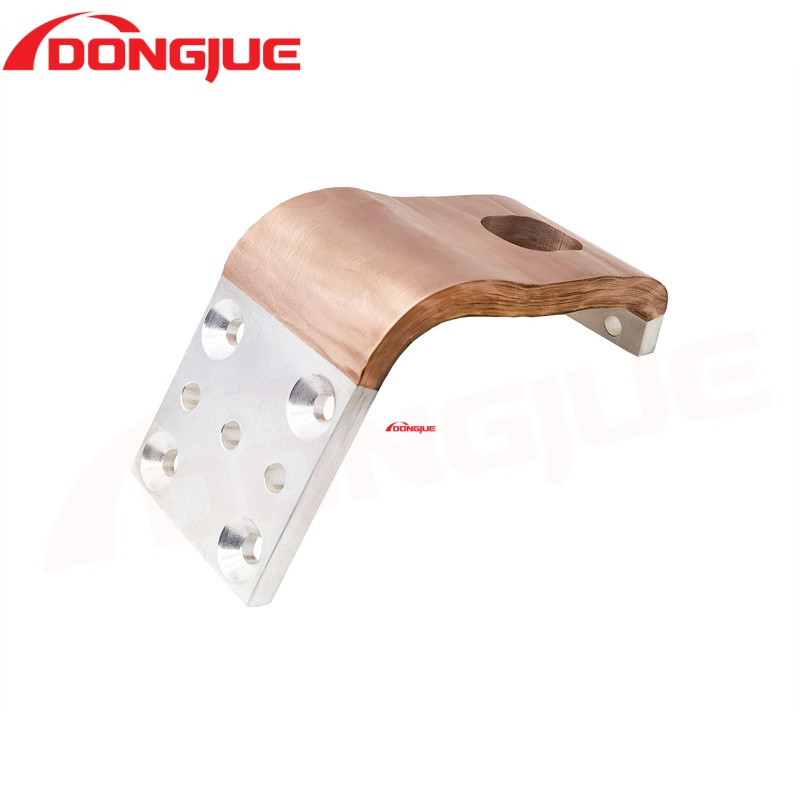Flexible Copper Busbar Benefits and Key Applications
2025-08-08
Introduction to Flexible Copper Busbars
Flexible copper busbars are engineered electrical conductors that combine high current capacity with vibration resistance and thermal expansion accommodation. At Dongjue, we manufacture premium flexible copper busbars that set industry standards for reliability in power distribution systems. This guide explores their technical advantages, specifications, and industrial applications.
Key Benefits of Dongjue Flexible Copper Busbars
Performance Advantages
| Feature | Benefit | Dongjue Standard |
|---|---|---|
| High Conductivity | Reduced energy losses | 101% IACS |
| Thermal Expansion | Eliminates mechanical stress | 17×10⁻⁶/°C |
| Vibration Damping | Withstands 20G acceleration | 500,000+ cycles |
| Current Density | Compact design | 5A/mm² continuous |
Technical Specifications
| Model | Current Rating | Voltage | Thickness | Width | Flexibility |
|---|---|---|---|---|---|
| DJ-FCB100 | 600A | 1kV | 0.3mm | 50-100mm | 30° bending |
| DJ-FCB200 | 1200A | 3kV | 0.5mm | 80-150mm | 45° bending |
| DJ-FCB300 | 2500A | 10kV | 0.8mm | 100-200mm | 60° bending |
Material and Construction
Layer Composition
-
Conductive core: Oxygen-free copper (C10100)
-
Insulation: Silicone or PTFE coating (optional)
-
Termination: Silver-plated copper lugs
Quality Certifications
✔ IEC 61238-1 compliant
✔ UL 467 listed
✔ RoHS compliant
✔ ISO 9001 manufacturing
Industrial Applications
Power Distribution
-
Switchgear interconnections
-
Transformer bus links
-
Generator terminations
Renewable Energy
-
Solar combiner boxes
-
Wind turbine converters
-
Battery storage systems
Transportation
-
EV charging stations
-
Railway power networks
-
Marine switchboards
Installation Guidelines
Best Practices
-
Surface preparation: Clean contact areas with electrical cleaner
-
Torque specifications: 25Nm for M10 bolts (refer to datasheet)
-
Bending radius: Minimum 5x busbar thickness
-
Clearance: Maintain 10mm between phases
Maintenance Schedule
| Interval | Checkpoint | Method |
|---|---|---|
| 6 months | Connection tightness | Torque wrench |
| 12 months | Surface oxidation | Visual inspection |
| 24 months | Insulation integrity | Megger test |
FAQ: Flexible Copper Busbar Applications
Q: How do flexible copper busbars compare to rigid busbars in transformer applications?
A: Key differences include:
| Parameter | Flexible Busbar | Rigid Busbar |
|---|---|---|
| Vibration Resistance | Excellent | Poor |
| Thermal Stress Handling | Automatic compensation | Requires expansion joints |
| Installation Tolerance | ±5mm alignment | ±1mm required |
| Maintenance | Minimal | Frequent re-torquing |
| Cost | 15-20% higher | Lower initial cost |
Dongjue recommends flexible copper busbars for:
-
High-vibration environments
-
Applications with thermal cycling
-
Sites requiring maintenance reduction
Why Choose Dongjue Flexible Copper Busbars?
✔ Laser-welded layers for uniform current distribution
✔ Custom configurations (L/T/U shapes available)
✔ 20-year design life in standard conditions
✔ Third-party tested for short-circuit withstand
✔ Global logistics support
Request Your Busbar Solution
For technical datasheets or application engineering:
📧 Email: [email protected]
With over 25 years in electrical component manufacturing, I guarantee Dongjue flexible copper busbars deliver superior performance in critical power applications. Contact our team for project-specific recommendations!
